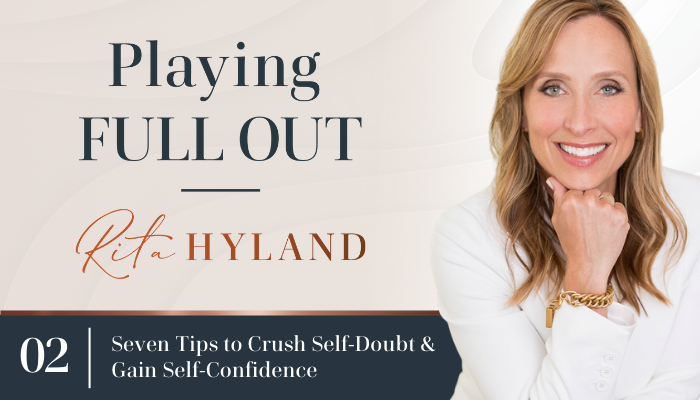 When I was a kid, I had this idea that, at some specific age or time, we would become wise and removed from any self-doubt. There would be a level of achievement or success, or some indicator that told me that I had “officially arrived.” I would no longer experience those moments of insecurity or lack of confidence. All would be bliss.
When I was a kid, I had this idea that, at some specific age or time, we would become wise and removed from any self-doubt. There would be a level of achievement or success, or some indicator that told me that I had “officially arrived.” I would no longer experience those moments of insecurity or lack of confidence. All would be bliss.
This misperception traveled with me for quite a long time. After many years of doing my own work, as well as working with individuals of all genders, races, ages, socioeconomic levels and achievement, what I’ve learned is that self-doubt can travel with you at all times…and forever. That might seem like a really daunting thing to hear, but there is something you can do about it.
You can listen to the full podcast episode here, or continue reading below.
I’m going to share seven strategies with you that I got from a mastermind that I lead. I asked the group what they found most successful in managing self-doubt, and I combined that with what I’ve found in my years of working with people to play full out.
Here are seven strategies to overcome self-doubt and generate greater self-confidence:
#1) Tame Your Ego
The first one is to tame your ego. In my case, it’s to tame my Tasmanian Devil. That’s what my ego looks like. Something I learned years ago that changed everything for me is that we all have an ego, which leads us into fear-based thinking. It’s our inner critic. It tells us we shouldn’t take risks. We shouldn’t be ourselves or show up too bright, because we might get hurt. Our ego was created by us to help us stay safe from physical harm.
Like I said, I have a picture of mine. It looks like the Tasmanian Devil that I watched in my childhood cartoon. He sits off to my left. He bounces up and down like a small child to get my attention. He has a lot to say. The problem is that, over time, we’ve given this protector too much power. We’ve allowed our ego to lead our whole life.
We originally created it to keep us physically safe from bears and other animals. It’s a primal part of ourselves. What happens along the way is that it begins to say, “I’m going to keep you from emotional hurt as well.” In that way, it helps us survive, but it can never help us thrive.
Who we really are is our True self, or Higher self. There are a lot of names for it. In short, it’s who we really are. That True self has plenty of wisdom, solutions and creativity to share with us if we listen.
What’s important to realize is that, whenever you’re in self-doubt, it means that the ego is leading you. It’s in charge. It’s yapping next to you. It’s your job to extract yourself from this “Self-Doubt-Rager.” To do so you have to change who is in charge. Here’s how to do that in three steps.
Declare, “That’s My Ego.”
First, declare, “That’s my ego.” Identify and be aware enough to say, “This isn’t me. This is my ego that’s getting in my way.” Know that you are not your ego. It’s not you who is scared; it’s your ego who is scared. It’s not you who is stuck; it’s your ego who is stuck. It’s not you who is freaking out; it’s your ego who is freaking out.
Separate from Your Ego.
Second, separate from it. It’s there, but it is not you. Acknowledge what your ego is saying. It wants to be heard. You may say, “I hear you, little guy.” You don’t have to kill or abolish your ego or inner critic. You created it to protect you from harm. It’s simply gotten overinflated with its power.
You’ve Got This!
The third step is to tell your ego that YOU have got this under control. Simply stated, take your power back from it. You can say out loud, “Ego, we’re fine. True self is in charge now. I’ve got this covered.” This strategy is a game changer when exercised. Once you’ve tamed the voice of this little inner critic which feeds your self-doubt, then YOU are back in the driver’s seat to make choices and actions aligned with your optimal vision.
#2) Get Real and Imagine the Worst
What is the very worst thing that could happen? Think about that in those moments that you’re doubting you. The reality is that your mind is already going there anytime you’re experiencing self-doubt. Within seconds, your mind has gone all the way to the bottom, in terms of the worst-case scenario. The initial thought happens first. Then the corresponding self-doubt/fear loop starts repeating. “I might lose my home. They’re going to think I’m a weirdo. The kids will have to change schools. My spouse is going to leave me.”
To do this practically, start first with your fear. “If I take on this new adventure, job or project, then what happens?” Then I may get demoted. Then what? I’ll lose my chance to get promoted. Then what? I won’t make as much money. Then what? Then my kids won’t get to go to the schools that they want. Then what? They become unhappy losers. Then what? I’m unemployed, we lose our house and live under a bridge.
You can see where I’m going with this. What is the likelihood of you living under a bridge at this point in time? Ninety-nine percent of our fears never really happen, but they end up controlling our lives when we don’t get a hold of them. It happens when we allow our mind’s if/then loop to make up stories. We do that in nanoseconds. It’s like a computer.
Get real with your fears and go to the worst thing that can happen. Identify the likelihood of that becoming true. Then ask yourself if you could deal with it, even if it did happen.
I was recently talking to a corporate attorney. He’s very successful and recognized in his industry. He’s been at his work for many years. At one point, he was one of the prominent new business generators. As we talked, he told me he’d lost his confidence around selling. He doubted that he had what it takes to connect with younger clients. He’d been wanting to set up new business meetings with some of his existing clients in Switzerland and London, but had been hesitating for months.
He was terrified of asking them to meet him. We worked through the worst thing that could happen. We dug deep to identify the real fear. It was that they might think, (in his own words), that he was a “weirdo” that he was coming that far too see them. They would think he was crazy for him to make this trip
Once he was able to identify and reckon with the worse-case scenario, he could see that he could deal with it. Within days, he took action, put out the calls to organize the new business trip and enjoy Switzerland…something he’d been thinking about doing for close to a year.
#3) Give Yourself a High-Five
The third strategy is one of my favorites. Write down three to five things that, at one time, you thought were impossible or a struggle that you achieved. Maybe it’s something that you experienced or made it through. It was tough, but you did it. Next, ask yourself what qualities you employed then that you can use again in your current situation.
I had a client who wanted to build a flight app for pilots. He was getting stymied due to his self-doubt and lack of confidence around it. I asked him to write down three to five things that, at one time, he thought were impossible or difficult. As he spoke I jotted down 10 to 15 things that were remarkable. He’d moved from Argentina alone. Left his parents and learned a second language. Put himself through college. Completed his MBA without English as his first language. Overcame limitations in order to become a pilot. He realized that the things that he had already done were much harder than creating this app for the iPhone! He acknowledged himself and effectively quieted the self-doubt that was holding him back. The application is on its way to being tested.
#4) Remind Yourself, “I’ve Got This!”
The fourth strategy is to talk yourself up. In essence, it’s about having a mantra or self-talk, so that when a defeating thought comes into your mind and self-doubt looms, you have something to counter balance it and cancel that thought out.
I use to have self-doubt that would fuel a level of anxiety that made me anything but productive or happy. Once I started recognizing the tailspin the voice was putting me it, I would crowd it out with a simple mantra like, “I’m safe and all is well.” Navy Seals who have one of the highest anxiety jobs are taught this technique to talk themselves up in the midst of anxiety based moments as well.
Mantras like “I’ve got this,” “I can do it,” or “all is well,” are effective at re-writing thoughts and redirecting your focus.
#5) Take a Leap
The fifth strategy to generating more confidence and overcoming self-doubt is to take a leap. Take action, however small it might be. This is to prove your head wrong. It’s to challenge the existing neuropathway and rewrite and begin to create a new one. When we act we create new evidence. We generate the type of confidence that can’t be created in a chair.
When seeking to take a leap, a great question to ask is, “If I knew for a fact I could (fill in the desire, experience or achievement), I would (fill in the leap.)”
In the case of the attorney, “If I knew for a fact I could make that appointment with the new client, what I would do is…” His answer, “I’d call them.” His next step was clear.
#6) Do It for You
The sixth strategy is to do it for you. So often, we fall into the self-doubt zone because we make other people our reasons for doing something, or not doing something. We don’t write an article because someone might not like it. We don’t speak up in a meeting because our idea may not be supported. We may not give that extra smile or eye contact because it might not be appreciated. What we’re really doing in these moments is attempting to manipulate others into liking us. The problem is, this is an exercise in futility. We can’t control others’ feelings and emotions. We’re never going to come up with the formula to get everyone to like us. It’s time to give that one up.
I’ve found that, one of the best ways to counteract this self-doubt trap when you’re paralyzed from taking action is to simply do it for you, not for anyone else. Write for you. Create a book club for you. Choose your next career for you. Decide if you’re going to the concert for you. Others will be affected, but when you begin by following your own internal GPS and inspiration, and you let go of attachment to others’ responses, something funny happens. A flow of energy, inspiration and creativity rises up. Action becomes easier. The solutions to challenges that we previously deemed impossible seem to drop from the sky.
I recently spoke with someone who gave himself very little opportunity for self-care. While he is a leader in his corporate world, he doesn’t choose for himself in his personal world. When I first talked to him, he said he’d lost touch with himself, his fulfillment and passion.
I asked him what he liked to do. He told me one of the things he loves to do is to see concerts, but he thinks others would find him strange if he goes alone and often it was hard to get another friend to go with him due to busy schedules. He doesn’t go anymore because he thinks his wife would be annoyed. I encouraged him to do for himself simply because he wanted to do it. He agreed to try it. The next time I saw him, he had a big smile. He said he’d had a great time, and would do it again.
The next time that you find that your self-doubt is holding you back, take the next step for you, without any concern for another’s opinion about it. Then see what happens. The results might really astound you.
#7) Ditch the “Fight or Flight”
The final and seventh strategy has to do with managing your state. When you’re in self-doubt, your brain is being sent a signal to the hypothalamus gland, which sets off a whole physical reaction known as fight or flight. Your adrenal glands start pumping out stress hormones. Your heart starts beating faster. Your blood pressure goes up. You breathe more rapidly. A number of other things happen.
The crisis can pass by choosing a different physiological response. My favorite one is a breathing exercise. It’s called 4-7-8. It has been championed by Dr. Weil.
This is how it works. You inhale for four seconds. You hold your breath for seven seconds. Then you exhale for eight seconds. There is a circuit that slows down your system and removes the fight or flight state of being.
Any one of these seven strategies can put you on an entirely different trajectory.
Think of a golfer who is striking a golf ball. To change the trajectory of his ball he needs to adjust his grip or his hips ever so slightly. In the same way, a very small action can habituate a very new reality…but you have to take action.
Take one of these seven strategies and apply it when self-doubt creeps in. Be the person who navigates and reduces the lag time between when it strikes and when you make a new choice, that is, when you enter the Self-Doubt Zone and when you leave it.
Know this. Everyone has self-doubt. It is not the first primal reaction, but the second deliberate response that determines our thoughts, feelings, actions, results…and ultimately our destiny.
You’ve got your escape hatch. I’ll see you in the arena!
Everyone has self-doubt. What do you do when self-doubt blocks you? Please share your thoughts below!
Resources:
Subscribe on iTunes for more tips, tools and inspiration to leading the optimal vision of your life, love and leadership. Remember, a half version of you is not enough. The world needs the fullest version of you at play.

___
About Rita Hyland
With over 20 years of experience as an executive and leadership coach, Rita helps leaders — emerging and established — excel in corporate and entrepreneurial environments.
Through her coaching programs, private coaching and masterminds, Rita shows leaders how to win consistently and create the impact and legacy they desire.
Central to Rita’s work is the understanding that you will never outperform your current programming, no matter how strong your willpower.
When you learn to use Rita’s proprietary Neuroleadership Growth Code, a technology which uses the best of neuroscience and transformational psychology to hit the brain’s buttons for change, YOU become both the solution and the strategy.
Rita believes if leaders were more clear about how transformation really works and more intentional about creating what they want, their impact, success and influence in the world would be unstoppable.
Her mission is to end talented, hard-working and self-aware leaders spending another day stuck in self-doubt or confusion and not contributing their brilliant work and talent the world so desperately needs.
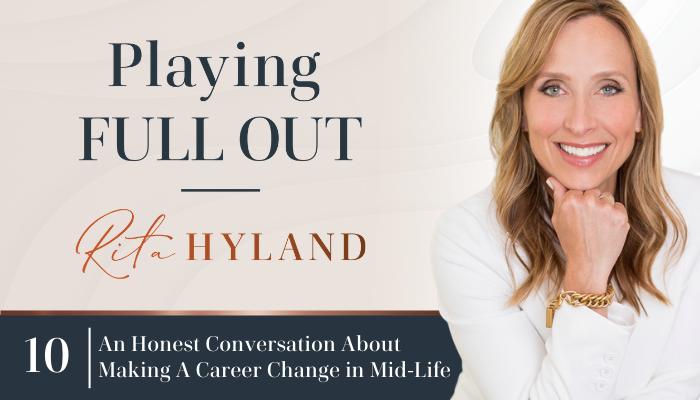



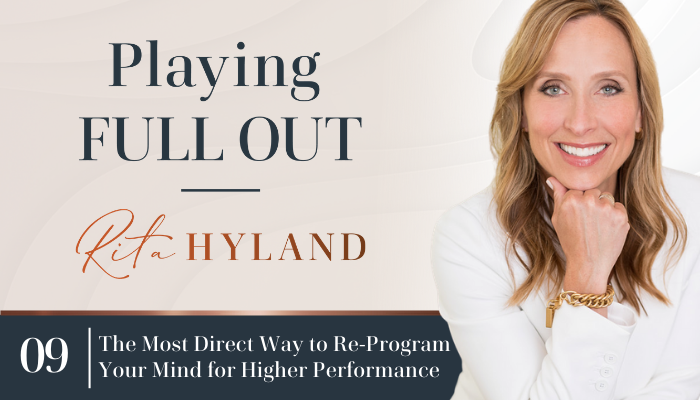

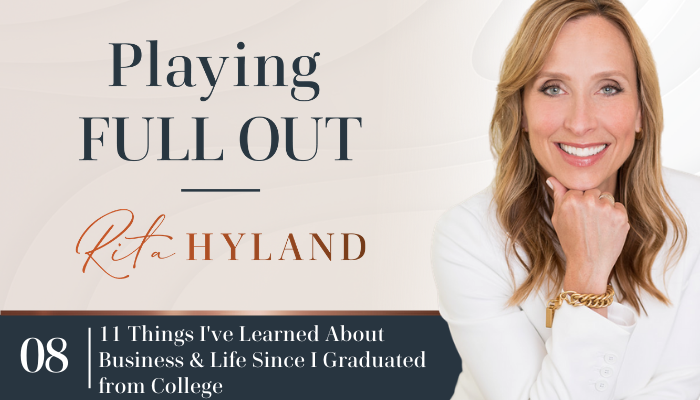

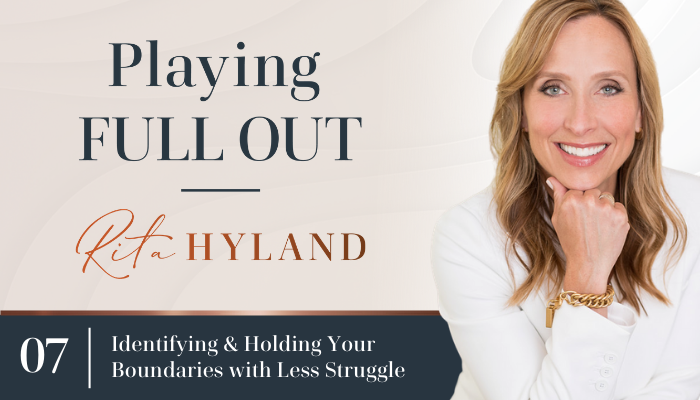

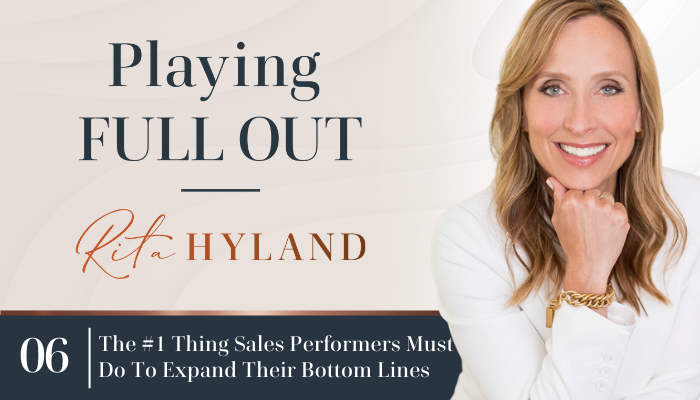


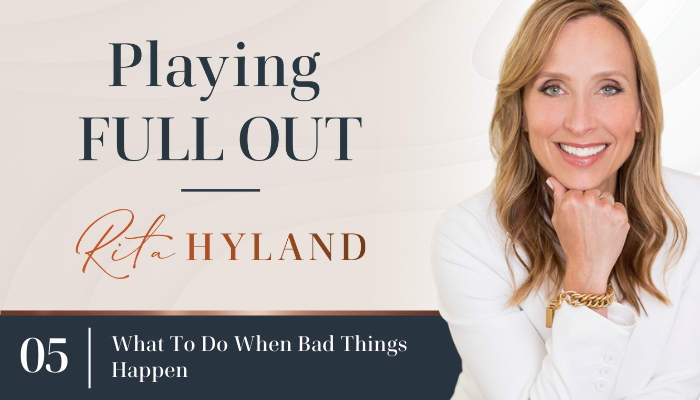

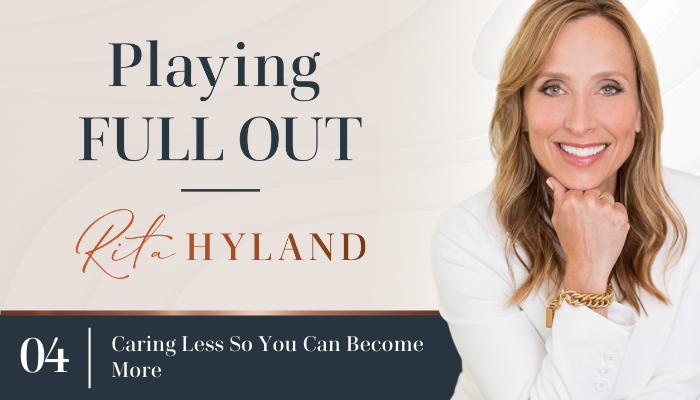
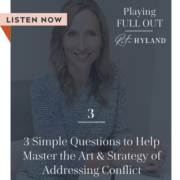
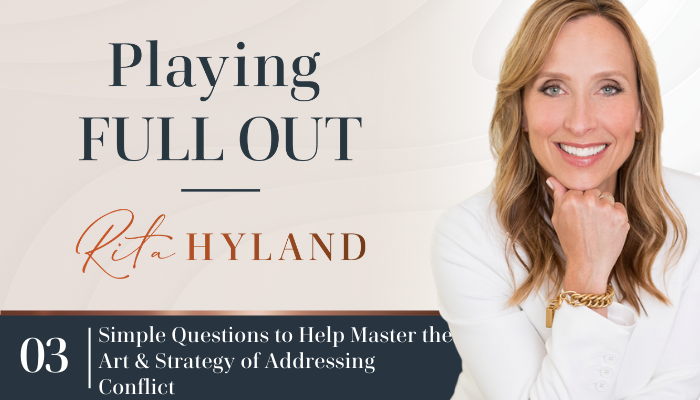
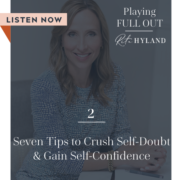
 When I was a kid, I had this idea that, at some specific age or time, we would become wise and removed from any self-doubt. There would be a level of achievement or success, or some indicator that told me that I had “officially arrived.” I would no longer experience those moments of insecurity or lack of confidence. All would be bliss.
When I was a kid, I had this idea that, at some specific age or time, we would become wise and removed from any self-doubt. There would be a level of achievement or success, or some indicator that told me that I had “officially arrived.” I would no longer experience those moments of insecurity or lack of confidence. All would be bliss.
 Have you ever found it difficult to clearly define what you want and your vision for this next phase of your life? If you consider yourself smart, highly functioning, and have achieved a decent level of success but are still asking, “Why the heck can’t I figure out what I want and go for it?” or “Why is my progress so slow and the pressure so intense?” then keep reading.
Have you ever found it difficult to clearly define what you want and your vision for this next phase of your life? If you consider yourself smart, highly functioning, and have achieved a decent level of success but are still asking, “Why the heck can’t I figure out what I want and go for it?” or “Why is my progress so slow and the pressure so intense?” then keep reading.